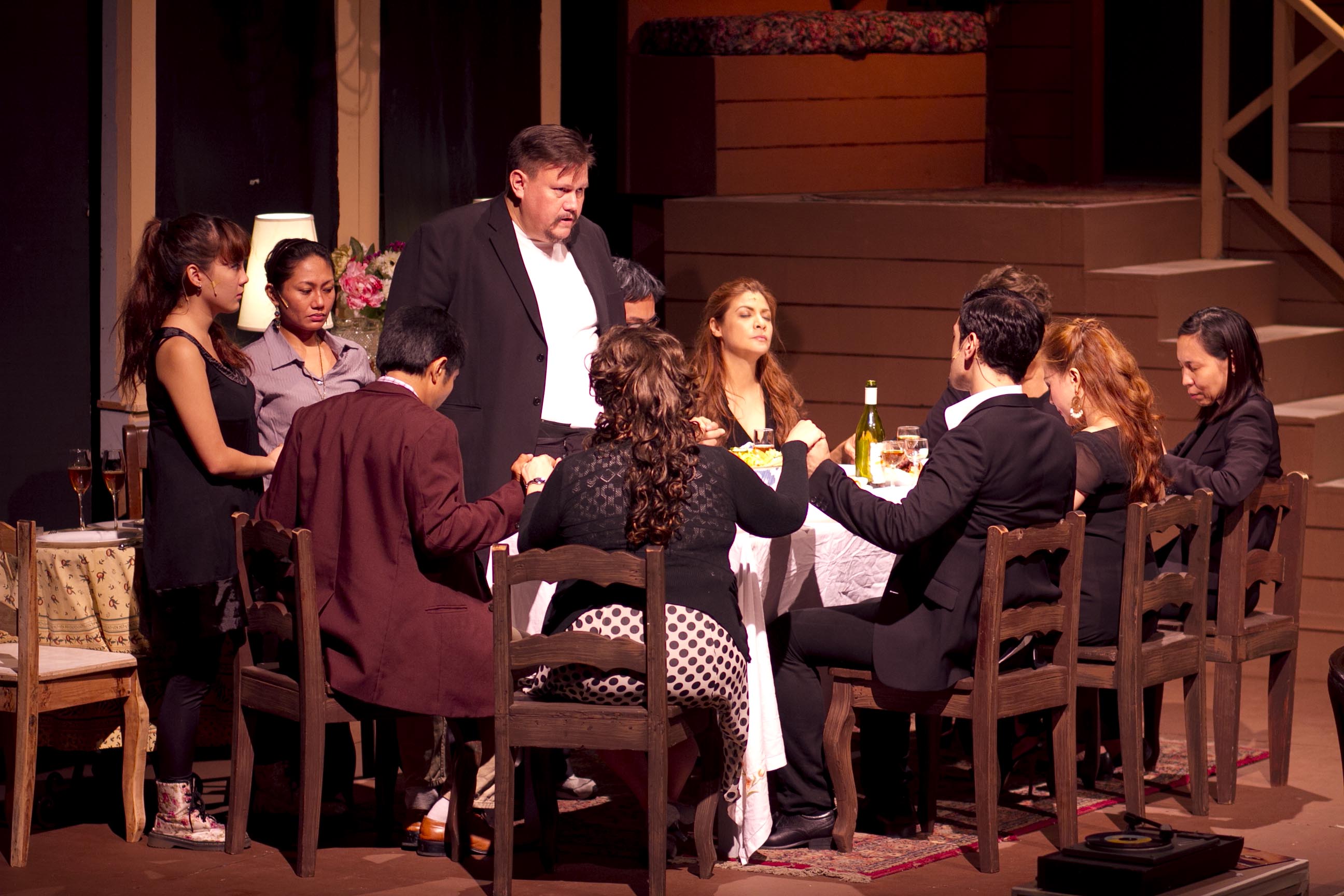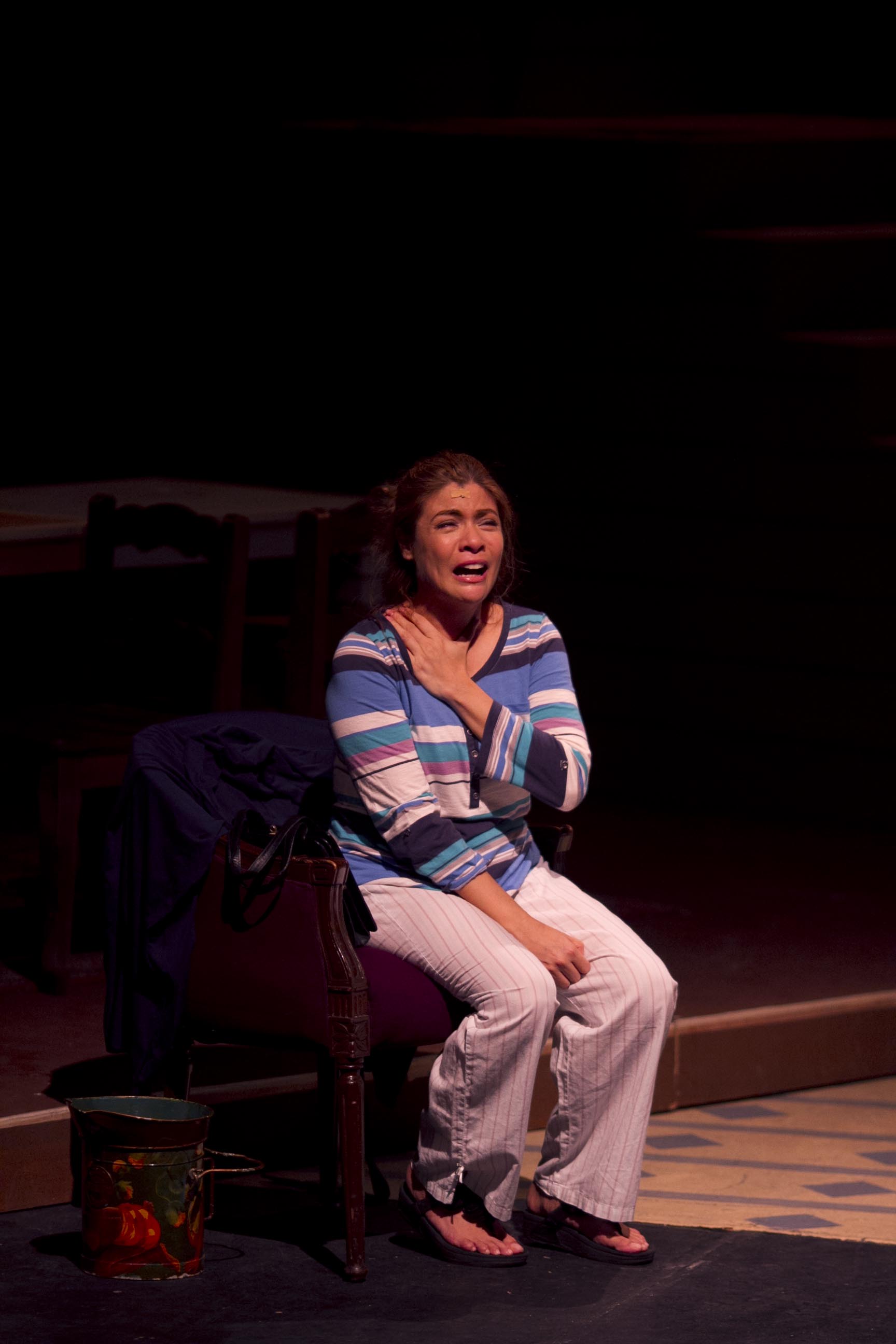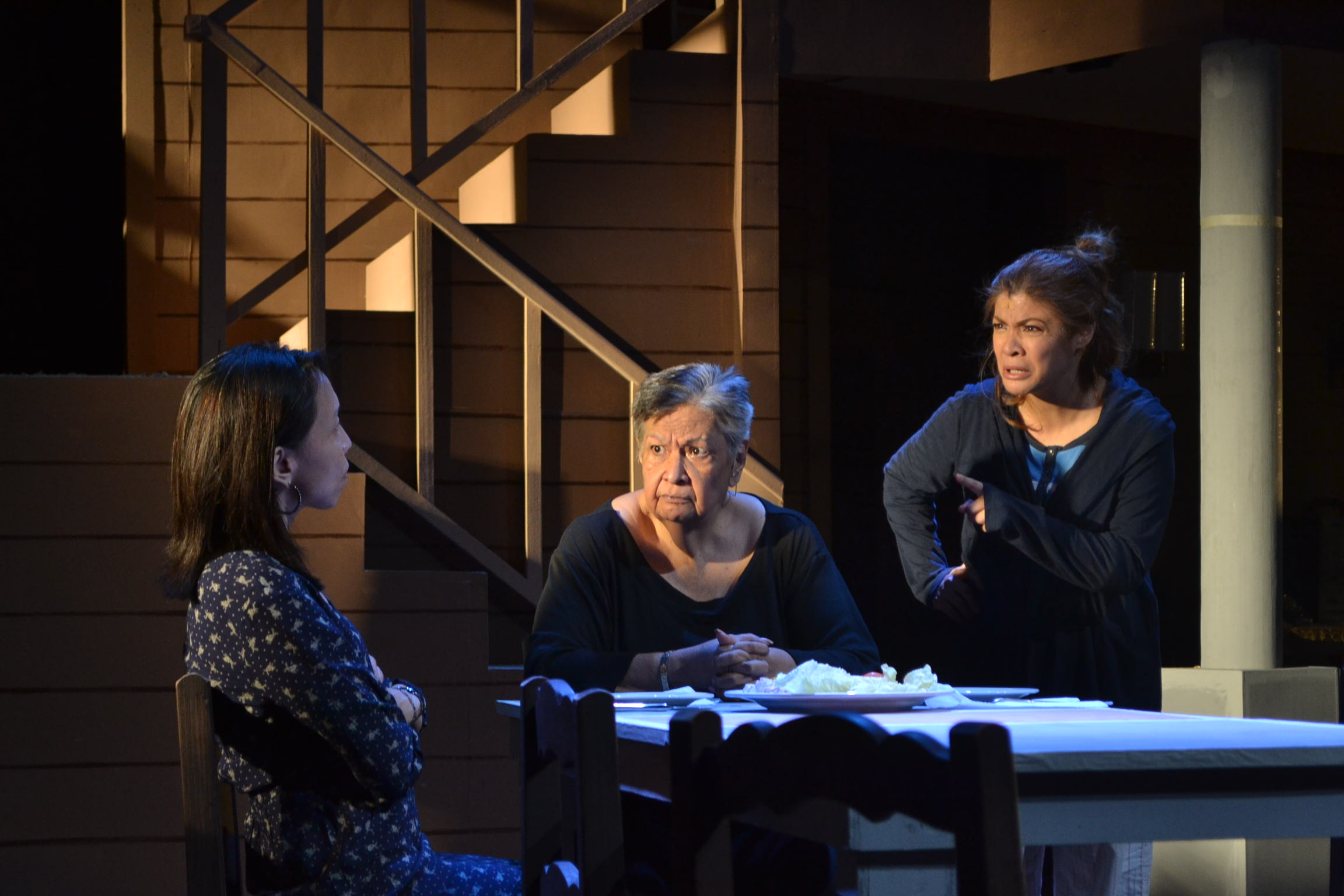I have come to the conclusion that accents are good. It is what I expect of most every Repertory Philippines play, given the texts that they choose to stage, and the truth that it is crucial to the insistence on staging plays set in places far away, if not within a historical period that is alien to a local audience.
It is Rep that has taught me that. And with August: Osage County I felt like I was being taught to un-learn it. I was forced to contend with the distance between audience and stage. No one took my hand and brought me into this world strange and different, but also absolutely familiar.
Psychosis after all is in all our families, and while that would be what is painful and difficult about watching the story of the Westons unfold before you, there were two things (and then some) in this staging that just didn’t allow for this pain to become yours. At most it was like watching a drama, a soap opera really, on stage where you are nothing but removed spectator.
Which is to say that there were some brilliant moments in this story’s unfolding, ones that made one more engaged in the characters’ conversations, the crises they were living with, which is what makes this world go round.
Crisis is established from the get-go, when the stage lights shine on Beverly Weston (Leo Rialp), a poet and teacher, now aged and living with his wife, their relationship bound by an agreement on letting each other his or her poison: Beverly gets to drink and Violet (Baby Barreo) gets to keep her pills.
He is speaking to American-Indian girl Johnna, applying as caregiver and cook for Violet, who is sick with cancer. He is on a roll, and in the seemingly roundabout way of speaking about the present, Beverly is also speaking of his years spent as academic and poet, as husband and father, where there is conceit that only age allows, as there is regret and longing, cloaked in waxing philosophical. Rialp does justice to this monologue, where the conviction and control intertwine to speak of a very particular voice that has surrendered to the miserable state of things, whose drunkenness is borne of a sadness, and who ends with ironic laughter to drive home the point.

The point also being that upon his disappearance and death, this house once dark and gloomy would come to life with three daughters, Barbara (Pinky Amador), Karen (Liesl Batucan) and Ivy (Tami Monsod), and an extended family of sister-in-law Mattie Fae (Sheila Francisco) and her husband Charlie (Richard Cunanan) and son Little Charles (Noel Rayos). The gathering is tainted by what has been silenced by age and distance, focused as the household is on finding and grieving Beverly’s loss, and redirecting concern to Violet.
But the latter would only happen as this story unravels, when all of them can get over the expectations of being family in the face of death. It is when the dead is buried that what has been silenced is articulated, and what has been contained rises to the surface. Ivy is removed from family no matter that she has remained living closest to her parents; none of her family know her, and more importantly they do not know the love she keeps. Barbara, as eldest child, deems it her role to be stable and proper, to be the one whose life is in order, because that is what’s expected, never mind that she is in denial about her divorce from Bill (Kenneth Moraleda) and her daughter Jean (Thea Gloria) is out of control. Karen is ditzy and flighty and arrives in love with her sleazy fiancée Steve (Hans Eckstein), believing in him despite.
All of them are on the brink and on the edge. There are too many secrets here, as there are silences. Conversations are strained, and as the familial dysfunction unravels, the volume rises, and the pace speeds up. The family members are acerbic in varying degrees, save for Karen who does not know how to be so. They all begin to be loud and over-the-top, saying a lot without actually saying anything, the conversations sarcastic and painfully so.
It is here that I would’ve wished the production had held my hand and not kept me at such a distance, because then there was nothing here that anchored me to their conversations. It felt like I was watching punchlines happen, or waiting for them to, instead of actually knowing these to be part of the bigger story that was unfolding before me. Too often, it seemed like I was watching some comedy show.
Which is to say that it felt disjointed, this production, like the members of the ensemble didn’t get to meld well enough with each other before press night. It can’t have been for lack of talent, because there was a lot of it here. Amador’s Barbara was brilliant in her undoing, where her transformation of the character is slow and deliberate, and yet was sold to have been an unconscious evolution. Barbara is the one character who will take your hand and make you believe in her story, and that is because of Amador.
All the other noteworthy performances happen relative to Amador’s. Batucan’s Karen is the perfect foil to the seriousness of the conversations that are here, where her giggles and laughter are contagious, and her positivity and cosmopolitanism allow her to be removed from this present that is her past. She is also kindest to Violet; she is the first one to leave. The only other performance that stood out was that of Cunanan’s Charlie, because he had perfect timing and was also wonderfully ironic: we know of this Southern man stereotype. Here, that stereotype is played to the hilt, to the point that he actually becomes real.
Most of the other characters felt like they were half-present, and that could be deliberate — I imagine director Chris Millado messes with my mind that way (haha) — owing to the setting that is the Westons home, now dark and old, and a wee bit psychotic. It was like all of them couldn’t wait to leave, and the moment the circumstances nudged them in the other direction, they all went straight for the door.
Were the disjointedness of characters deliberate for this staging, then what was missing here was the one reason that even kept them in that house beyond the day of Beverly’s funeral. Because they could’ve all just left already, right away, owing to the dysfunction and unhappiness that was here; yet, they all stayed for reasons that disappear into the noise and craziness.
I tend to think it was the lack of a Violet that could (un-)glue these characters together and apart. Where one might imagine the disjointedness of the cast to have been deliberate, one is hard put to find an excuse for the portrayal of Violet, who as matriarch and central character needed to be strong and powerful despite age and cancer. There needed to be a certainty in her step, a clarity in her eyes, about the whys and wherefores of the family’s undoing, even as she is squarely in the middle of it. Her own psychosis should’ve been that center, that anchor, that catastrophe that is reason for both the family’s existence in that house at that moment, as well as these relationships’ utter collapse.
But Barredo’s Violet was far from being this powerhouse of a character. For the most part the greatness of that set (by Miguel Faustmann) slowed her down physically, and highlighted how swiftly the rest of the cast was moving compared to her as central character. There were too many literal silences (at least on press night) here, where it seemed as if members of the cast were waiting for Violet to navigate that set, to get down from the stairs, to find the light (artfully designed by Katsch Katoy).
There were also too many missed opportunities as far as witty retorts and sarcastic exchanges were concerned, as Violet struggled with engaging with the conversations around her, where the lack of quickness in her step might be said as well about the delivery of lines. It was almost like watching punchlines go to waste. The sadder part might be that when those punchlines worked, they did so not because we were seeing Violet getting it on with her daughters; it was because we were seeing Barredo and no one else.
I imagine it great to watch this theater veteran strut her stuff on stage again, in such a major role at that. But I also imagine that she would be the first to acknowledge it when it ain’t a job well done. In the case of Violet, the slowness pulled down this whole production, and the three hours felt like four. Or five. The story of the Westons was also lost in all that waiting, the work of the other actors on that stage dissolved into the lack of a Violet that was as strong as the rest of ‘em.
I realize, I should’ve known it the first time I heard this Violet speak. She had no accent where everybody else (save for Johnna) was as Southern as they could come. That is the most basic thing I expect of Repertory plays, that I can be transported via set and lights and costumes (all successful here), and accents and culture-specific flourishes like no other ensemble can do them. Barredo’s Violet did not have it, from beginning to end. It was portents of things to come.
I have come to the conclusion that accents are good.
August: Osage County is written by Tracy Letts and directed for Repertory Philippines by Chris Millado. Set design by Miguel Faustmann, lighting design by Katsch Katoy, costume design by James Reyes.



